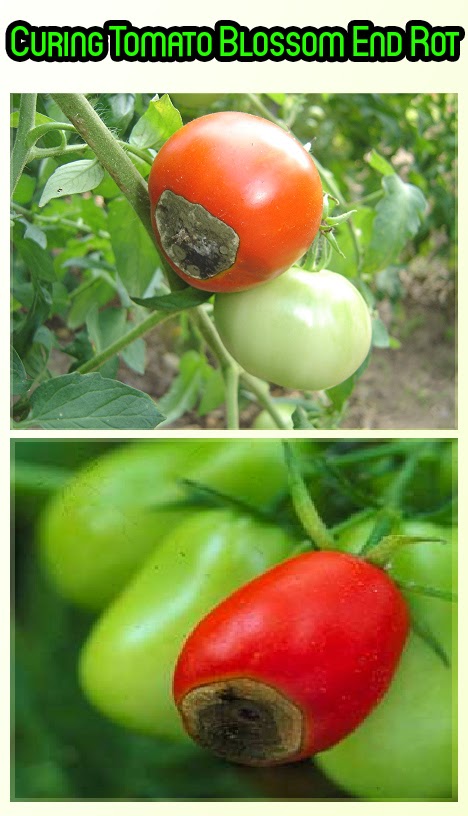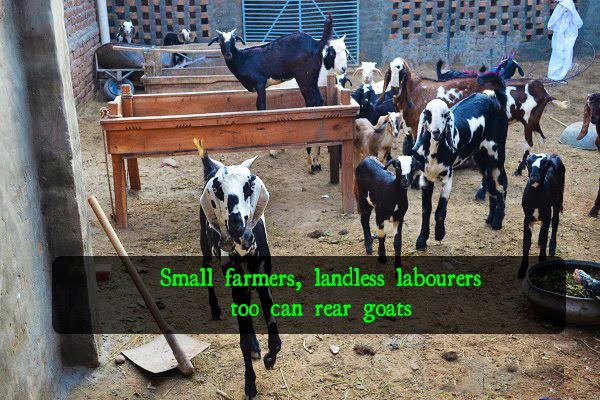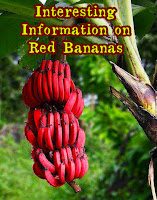Share This
Tuesday, 5 November 2013
Curing Tomato Blossom End Rot
If you are gardening tomatoes at your home garden you may have encounter the particular problem on the blossom end of the fruit. Although this problem also appear in eggplants and peppers too.
It is distinguish by a brownish, depressed leather like area with a size varies from dime to dollar coin or may be more. It make the tomato unfit to sell if not consume.
Causes :
The main culprit of the problem is the deficiency of the calcium in soil coupled with the erratic supply / access of water by the plant. However careless pruning of vines and hoeing also contribute to the problem.
Treatment:
- If you find any fruit affected with the rot, pluck it from stem immediately.
- Keep the soil moist every time especially during hot / dry seasons. You can use pet bottle irrigation for this purpose.
- Use mulching technique to capture the moisture in the soil for longer duration.
- In order to increase the calcium content in the soil one can add grounded egg shells in the soil
- Stop hoeing and cultivating other plants near the plant.
- You can use the products below to improve the condition of tomato plants in your garden
Labels:
Plant Disease,
Plant Nutrition,
Tomato
Monday, 4 November 2013
Small farmers, landless labourers too can rear goats
From time immemorial Indian peasants have always been rearing animals for extra income.
But now all this is changing, with shrinking pasture lands and scarcity of green fodder, rearing farm animals is being considered un-remunerative.
To encourage small farmers and landless labourers to take up goat cultivation without having to spend much, scientists from Peruvannamuzhi Krishi Vigyan Kendra of the Indian Institute of Spices Research (IISR) have fine-tuned a technology.
CAREFUL PLANNING
“Our veterinary experts, through careful planning and breeding charts, have been able to fully exploit the reproductive efficiency of female goats. In a large herd, synchronization of estrus cycle by administering PGF2 alpha injection and timely breeding by using good quality frozen semen or natural service by superior male enhances not only conception rate for a female goat, but also the farmer can bring most of the females in a herd to deliver (kidding) at a specified period. In a herd of 50 animals, we can bring 10 or 20 goats to deliver in about 150 days at a time by this method. It is a boon to the farming community,” says Dr. M. Anandaraj, Director of the institute.
The institute has also formulated a technique for raising the goat kids. After 15-30 days the kids are housed inside a shed that is made of bamboo or wood with plenty of sunlight and ventilation for 120-140 days before being sold.
ONCE A MONTH
Once in a month the kids are also allowed to suckle from its mother 2-3 times a day before completely weaning them away.
Animals grown under this method attain 25-33 kg of body weight in 4-5 months compared to those animals grown under conventional method that attain only 10 kg in six months.
Initially the kids after being weaned away from their mother are fed small quantities of concentrated feed prepared specifically by the institute's experts.
Depending on the consumption, the feed quantity is slowly increased. Additionally liver tonics mixed with fish oil are also given to increase appetite and aid good healthy growth.
Clean water is made available all through the day.
The expense for feeding one kid comes to about Rs.1,200 a month and a net income of Rs.5,000 to Rs.7,000 can be got in some months by selling the kids.
This feed is also available in the market in some commercial brand names and farmers can also make them by mixing rice, wheat, maize, horsegram etc.
CONTACT
“Farmers can contact the institute at the address given below to clarify their doubts and learn more about this,” says Dr. S. Shanmughavel, animal science specialist of the Institute.
Various women self help groups and several individual farmers in Kozhikode district, Kerala, have started to rear goats in this method for the past few years.
Low cost, better return and easy management are some of the favourable factors that motivate farmers to take up this technique.
This has become a flagship programme of our Kendra because it helps rear more number of goats in a short span of time.
“The biggest advantage is that those who have only few cents of land can also grow goats. We need not spent much time grazing them out in the open. Managing a dozen goats is not a big task now for landless workers or small farmers,” says Dr. Shanmughavel
SUCCESS
The success of this technology is not confined to Kerala alone. Farmers from other states like Karnataka, Tamil Nadu, Andhra Pradesh, and Gujarat are visiting the Institute to learn more about this method.
For more details readers can contact Dr. S. Shanmughavel, Subject Matter Specialist (Animal Sciences), Krishi Vigyan Kendra, Peruvannamuzhi Post, Kozhikode: 673 528, Kerala, email: kvk@spices.res.in, Phone:0496-2662372. and also log on to YouTube Channel (http://www.youtube.com/iisrcalicut) to watch a documentary film on broiler goat rearing practice.
Tomato Companion Plants
Are you a tomato gardener and worried due to not getting good yield? No try planting tomatoes with the plants in green and avoid those who are red. By companion planting not only you can get a better harvest but companion plants might deter the pest for your tomatoes.
Top 10 apples to grow in your garden
 |
| Bumper crop: a mixed basket of apples from the Aspall estate in Suffolk. The family has been growing cider apples for eight generations |
We have the best climate in the world for apples, so why do we grow so few varieties? A leading orchard owner recommends 10 to try at home
By Sarah Raven
The Telegraph
This year looks like being a vintage apple crop. The spring rain was good for blossom and we've had plenty of sunshine since – but not baking drought – which is just what makes an apple particularly tasty. There's plenty of sugar in the fruit, along with quite high levels of acidity, the perfect balance for flavour.
The apple-growing community is loving 2013, and are on a campaign for us all to plant more trees. We should be adding them to our gardens and underused public spaces. In apple-growing counties such as Suffolk, Herefordshire and Kent community orchards are already being encouraged.
Henry Chevallier Guild, eighth generation of the apple-growing Aspall cider family, is a leading advocate. As he says, Britain has one of the best climates in the world for apples. In the 19th century we used to make the most of that, with 2,500 different varieties listed in the UK, but that's now declined to only 12 that you'll commonly see. It's even quite rare to see a whole orchard of Cox varieties.
The most widely grown apples are now modern hybrids such as 'Gala', 'Braeburn', 'Jazz' and the similar 'Kanzi', along with 'Idared' and 'Falstaff'. These are OK and travel well, but they're not the best for flavour, whether eaten or made into juice or cider. For that, you need Coxes, Spartans and Russets: traditional varieties that have done well here for decades but which are on the wane.
Aspall's estate in Suffolk is entirely organic and, as Henry says, if you choose the right forms, growing apples in your back garden without chemicals is easy. I'm tired of my home-grown apples being riddled with scab, so I am keen to find tasty, disease-resistant forms which will give me a decent harvest. That's the primary requirement of Henry's top 10 apples listed overleaf, but they'll all be helped – as Henry says – if they're planted with a walnut or garlic nearby.
How this companion planting works is not well understood, but it is regarded as an effective way to help prevent scab. There is some symbiotic relationship between the scab spores and walnuts or garlic which means the apple tree stays scab-free. In the apple forests of Kazakhstan (from where all apples trace their genealogy), there is plenty of scab spore about but none of the trees have it. At ground level there are many bulbs, and it is widely believed that they perform the same job.
Henry gives me his list of top varieties but, when pushed to name his desert island apple, he decides on 'Howgate Wonder', a brilliant all-rounder, supremely tasty and easy to use in so many different ways.
HENRY'S TOP TEN APPLES
1. 'Chivers Delight'
This is a late flowerer and cropper referred to in the trade as a 'Cox Plus'. It has as much flavour (if not more) than 'Cox's Orange Pippin' and better acidity, which it keeps in storage. Cox famously go woolly quickly in storage, whereas the flesh of 'Chivers Delight' remains firm and nutty. This fell out of commercial favour because of its colour irregularity. If the sun is on it, the fruit goes red, but it will not colour up on the shady side. This does not affect the flavour but makes them difficult to sell.
2. 'Spartan'
Nothing has the same richness of colour as 'Spartan', a lovely deep plum red, with almost bright white, contrasting flesh. It's a beautiful apple, which stays late on the tree and makes a fabulous eater with very juicy fruit. It's the one I use at Perch Hill for Christmas wreaths and, being a good storer, is widely available late in the year.
3. 'Blenheim Orange'
A fabulously aromatic, peppery, almost spicy apple with a softer nuttiness than you get with the similar-flavoured 'Egremont Russet'. This variety is a bit prone to scab, so is best grown on its own and certainly away from very scab-prone varieties such as 'Crispin'.
4. 'Egremont Russet'
A famous apple with a wonderful nutty, woody texture and a very characteristic taste, floral and heady, so you can almost smell the blossom. It stores well, with the flavour deepening to honey.
5. 'Pitmaston Pineapple'
This is a very unusual apple, difficult to find but, in Henry's view, worth the effort. It eats like a 'Greensleeves' early on, but you can store it until April when the flavour morphs into pineapple.
6. 'Greensleeves'
A light, crispy, full-of-flavour apple, lovely and crunchy straight off the tree. This is the one 'Golden Delicious' aspires to be, with excellent flavour in a beautiful pale yellow fruit.
7. 'Discovery'
This is one of the first to harvest (in August), so Henry loves it for reminding us what we've been missing all summer. If we get a sunny July and August, the redness leaches from the skin into the flesh. Then if you press it, you'll have a beautiful pale pink juice.
8. 'Worcester Pearmain'
A rich, creamy apple with a really strong flavour, one of the original varieties brought over by the Normans. It's just about surviving in the UK, but you don't see it often, apart from in the Wye Valley where it's usually pressed into juice.
9. 'Howgate Wonder'
A great all-rounder apple – a good cooker early on, it also presses well and mellows the later you leave it, with the acidity dropping away, so it can be eaten as a dessert apple from the store or tree. It's one of the few varieties where you can leave the fruit on the tree, start harvesting in August and carry on until the end of October at least. It performs well whatever the weather and is often a challenger for the largest fruit.
10. 'Médaille d'Or'
Henry's final recommendation is this wonderful bittersweet cider apple, still abundantly on the tree, until the end of November. The tree's appearance is unique – "there's a Grand Dame feeling about them, which reminds me of my grandmother," he says, "knotted and gnarled in the winter and very late to blossom in the spring. You think they're dead and then out the flowers come towards the end of May". The fruit is small and very acid, essential tannin for flavouring cider.
This is one of the great cider apples and one that – if you have the room for two trees and fancy a bit of cider-making – would be good to grow. Mix 50/50 with an acid apple such as 'Howgate Wonder' and you're away. Then you have the tannin from 'Médaille d'Or' and acidity from 'Howgate Wonder' and both have good sugar levels.
They are pruned to weep in the Aspall orchards, with graceful branches arching down almost to ground level. You can get right in underneath and be enclosed in an apple den.
Red Banana
Red bananas, also known as Red Dacca bananas in Australia, are a variety of banana with reddish-purple skin.
They are smaller and plumper than the common Cavendish banana. When ripe, raw red bananas have a flesh that is cream to light pink in color.
They are also softer and sweeter than the yellow Cavendish varieties, with a slight raspberry flavor. Many red bananas are imported from producers in Asia and South America. They are a favorite in Central America but are sold throughout the world.
Red bananas are eaten in the same way as yellow bananas, by peeling the fruit before eating. They are frequently eaten raw, whole or chopped, and added to desserts and fruit salads, but can also be baked, fried and toasted.
Red bananas are also commonly sold dried in stores.
Labels:
Banana
Sunday, 3 November 2013
Texas Manure Fact
The nearly 3 million beef cattle, 1.1 million hogs, 330,000 dairy cows, 90.4 million broiler chickens, and 13.8 million egg-laying hens on factory farms in Texas produce as much untreated manure as 430 million people — more than the entire U.S. population.
Subscribe to:
Comments (Atom)







